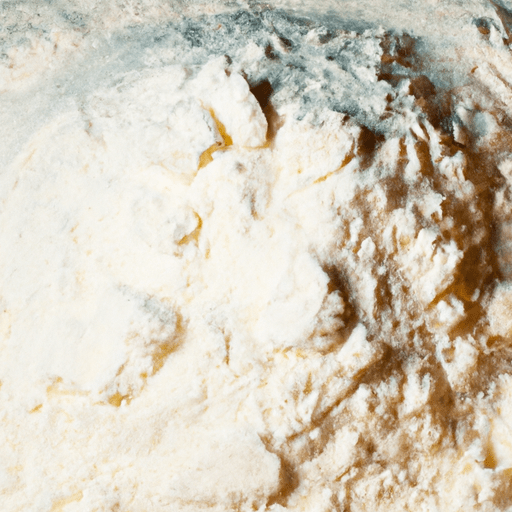Gluten-Free Bread Flour: The Perfect Alternative for Delicious Baking
Are you looking for a gluten-free alternative to traditional wheat flour? Look no further than gluten-free bread flour! With its incredible versatility, amazing taste, and countless health benefits, gluten-free bread flour has become a favorite amongst those with dietary restrictions or a desire for healthier baking options.
Taste and Texture
Gluten-free bread flour is known for its ability to deliver a wonderfully light and airy texture, closely mimicking the traditional wheat-based counterpart. However, the taste may vary depending on the specific blend used. Some gluten-free bread flours have a milder flavor, allowing the other ingredients in your recipe to shine, while others have a slightly nutty or whole-grain taste. Whichever variant you choose, you can be sure that your gluten-free baked goods will be incredibly delicious and satisfying.
Common Uses in Cooking
The versatility of gluten-free bread flour makes it suitable for a wide range of recipes. You can use it to bake a variety of delicious goods, such as bread, bagels, pizza dough, muffins, cookies, and even cakes. Whether you’re a seasoned baker or just starting out, gluten-free bread flour provides a reliable base that can handle all your baking needs.
One of the challenges of gluten-free baking is often achieving the right texture and structure. Gluten, a protein found in wheat flour, gives dough elasticity and helps it rise. Without it, achieving the same results can be difficult. Gluten-free bread flour, however, contains a blend of alternative flours and binders, such as rice flour, tapioca starch, and xanthan gum, which work together to create a similar texture and structure.
Nutritional Value
Gluten-free bread flour offers numerous nutritional benefits that can contribute to a balanced diet. It is often enriched with essential vitamins and minerals like iron, calcium, and B vitamins, helping you meet your daily nutritional requirements. Additionally, using gluten-free bread flour can be a great choice for those who follow a gluten-free or wheat-free diet due to intolerances or celiac disease.
Interesting History and Facts
Did you know that gluten-free bread dates back to the days of Ancient Egypt? Archaeological evidence suggests that Egyptians used a combination of gluten-free grains, like millet and corn, to create bread. Modern-day gluten-free bread flour has come a long way since then, as manufacturers have perfected blends that offer improved taste and texture without sacrificing nutritional value.
It’s worth noting that not all gluten-free bread flours are the same. Different brands may use varying combinations of alternative flours and binders, resulting in different baking properties and tastes. If you’re new to gluten-free baking, don’t be afraid to experiment with different brands to find the one that suits your preferences and culinary needs the best.
Thanks to gluten-free bread flour, individuals with dietary restrictions or those looking for healthier baking alternatives can enjoy a wide range of delicious and satisfying baked goods. From savory bread to sweet treats, the possibilities are endless. So go ahead, get creative in the kitchen, and let gluten-free bread flour elevate your baking to a whole new level of yum!
Note: Please remember to check the ingredient labels on the specific brand of gluten-free bread flour you choose, as manufacturing processes may vary, and some products may contain traces of gluten.
Gluten-Free Bread Flour
Origin: Gluten-free bread flour is a type of flour that is specifically formulated to be used in gluten-free baking. It is made by combining various gluten-free flours, starches, and additives in order to mimic the texture and structure of traditional bread flour, which contains gluten.
Common Uses: Gluten-free bread flour is primarily used to make gluten-free bread and other baked goods such as rolls, bagels, and pizza dough. It can also be used for making gluten-free pancakes, waffles, and other similar recipes that require a flour with bread-like qualities.
Nutritional Benefits: Gluten-free bread flour is typically enriched with essential nutrients such as iron, thiamin, riboflavin, and niacin to compensate for the nutrients lost during the refining process. It is important to note that the nutritional composition of gluten-free bread flour can vary depending on the specific brand and type of ingredients used.
Unique Properties: Unlike traditional bread flour, gluten-free bread flour does not contain gluten, a protein found in wheat and other grains that provides structure and elasticity to baked goods. Therefore, gluten-free bread flour requires the addition of other ingredients such as xanthan gum or psyllium husk powder to help bind the ingredients and create a desirable texture.
Historical Significance: The development of gluten-free flours and baking products has significantly evolved over the past few decades. Earlier attempts at gluten-free baking often resulted in products with compromised texture and flavor. However, with advancements in food science and the growing demand for gluten-free options, the quality and availability of gluten-free bread flour have improved, allowing individuals with gluten sensitivities or celiac disease to enjoy a more diverse range of baked goods.




Use the share button below if you liked it.
It makes me smile, when I see it.